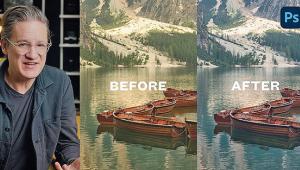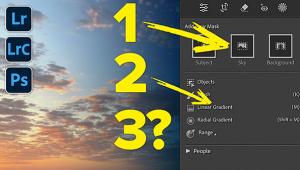It’s (Way Past) Time for Some Standards
![]()
It's (Way Past) Time for Some Standards
by George Schaub
One of the pleasures of this job is getting to work with a wide variety of cameras, printers and software. While the pace of change can be dizzying, and complicated, there's no lack of new materials and discoveries to be made. Unfortunately, the pitfall of this is that a lot of time is spent (wasted) getting everything to work together, particularly when a new technology comes into play. The experience lots of photographers had with Vista, for example, points this out more than anything--the lack of compatibility with current gear was glaring, and many folks simply gave up and returned to XP. But operating systems are not the only culprit--it's printers, papers and inks and especially Raw file formats. All seem made for a frustrating experience, one that calls out for some sanity and standards to be set.
This recently came to the fore when I got a new camera to test that had, of course, another version of Raw file format. I shot a card full of images and downloaded them through a card reader--no problem there. Then I went to open them through Adobe Camera Raw, to discover that I had to download the latest version of the software to get it to work. No problem there, since Adobe has been very quick to supply updates as needed. But I noticed that it would only work if I had the latest version of Photoshop (CS3) and the most current operating system on my Mac. Now, that seems fine, but having taught at a number of workshops recently I have noticed that not everyone has CS3 (yes, they get along with CS2 fine, and some even were working with 7) and if so, they were out of luck. Yes, the supplied camera software would read the Raw files, but often users want to go right into Photoshop, or Lightroom or Aperture with their images.
A few years back Adobe encouraged a standard Raw format, dubbed DNG--for digital negative--that was adopted by a scant number of camera makers as their standard. But camera makers continue to maintain Raw as a proprietary format, which means that not only does the Raw file change from maker to maker, but from camera model to camera model. This new coding is claimed to get the maximum from each Raw image, and in fact the independent software makers reverse engineer the code to get it to work with their converter, and usually get it right. But this to me seems like a Tower of Babble that might some day turn around to bite all of us in the posterior. What happens with old Raw files that might not be able to be read by the latest software updates? Will these Raw files from today be readable many years down the road?
The answer the camera and software makers give is that these files will always be "backward compatible." But in fact the old Kodak Photo CD format, which worked with layered levels of resolution, is not readable in CS3. Photo CD was one of the first film scan to digital formats out there, and when it came out many of us rushed our prime slides and negatives to labs to get them digitized so that we could use them in software and for printing on inkjets. In fact, In fact I learned to keep an older copy of Photoshop on my computer for just those files; I open them, save them to a folder and then open them in CS3.
The same goes for paper profiles. As you probably know if you have done any printing on an inkjet that the maker only supplies profiles for their papers in the supplied drivers. This means that if you use a third-party paper (that is, a non-printer manufacturers' paper) you have to pick a close match (and close is not often good enough) or go to the paper manufacturer web site and download and install the profile for the chosen printer. My experience is that a number of these profiles are quite good, but more often than not I have to tweak the profile, or do a custom profile, to get them optimized. This setup is no doubt a good deal for the print manufacturer's paper sales, but is not great for those of us who love to experiment with new surfaces and weights. I know it is a major deal when you have to test new papers like we do at the magazine.
Yes, you can get good results with matching as close as you can and experimenting with setups and surfaces. But with the cost of paper showing no signs of going down--in fact, I have heard many complaints about how high paper costs are becoming--it's not something you want to have to test and re-test to get it close to the kind of results you desire. It would seem to me that if paper manufacturers want to involve more and more people in printmaking, which is one of the joys of photography these days, that some attempt at standardization should be made.
The reason standards seem to be such a moving target is that the pace of development and technological advancement is so fast. This is what contributes to the constant improvement in image quality. But unless you are willing to stick with one camera, one software and one type of paper (and printer) you will have to contend with re-calibrating, re-upping software and even operating systems to take advantage of what's ahead. Sometimes it seems like a bit of a game, one where the manufacturers and engineers work with an eye to moving you from one piece of ear or software to the next as much as a desire to offer better products and superior image quality. One way out of this constant turnover is to develop standards that we can all rely upon to be maintained over time. I hate to be cynical, but I get the feeling that they will not be coming anytime soon.
- Log in or register to post comments












































